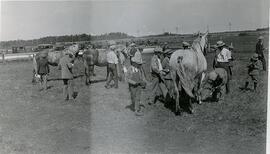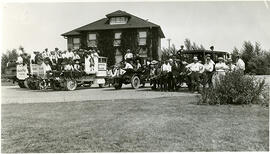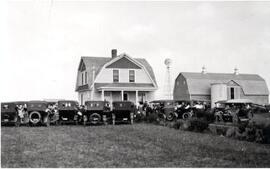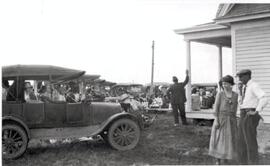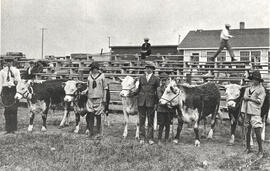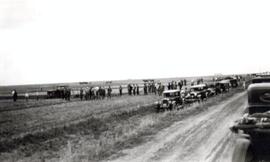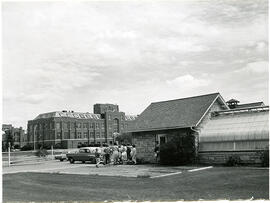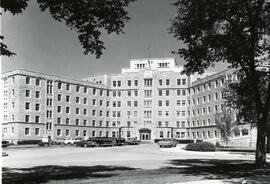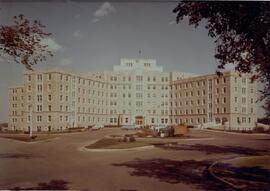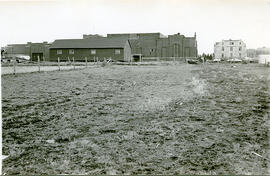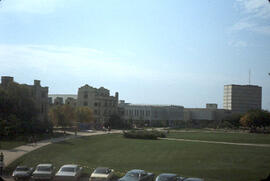View of large group of vehicles parked in front of the home of Charles Marks of Midale, Saskatcchewan.
Bio/Historical Note: The event at the farm of Charles Marks was the first of its kind to be known as a Field Day. Charles M. Hamilton, Saskatchewan Minister of Agriculture; A.M. Shaw, professor of Agriculture, and John G. Rayner, director of the Extension Department, attended.
Bio/Historical Note: “A new feature was tried out this year, viz. that of holding a picnic or field day at the home of a farmer who had made good in some one or more lines of endeavor, such as crop or live stock production. One was held on the farm of Charles Marks at Midale. Mr. Marks has the only silo in his district and a herd of good Holstein cows, quite a large acreage of corn, sunflowers and sweet clover. What Mr. Marks had done was used by the speakers present from the College and the Department to show others what might be done to improve agriculture. An automobile tour was arranged in the Snipe Lake district and a number of good farms were visited to the end that suggestions might be found that would lead to improvement in farm practice.”
Dean of Agriculture’s Report, 1922.



